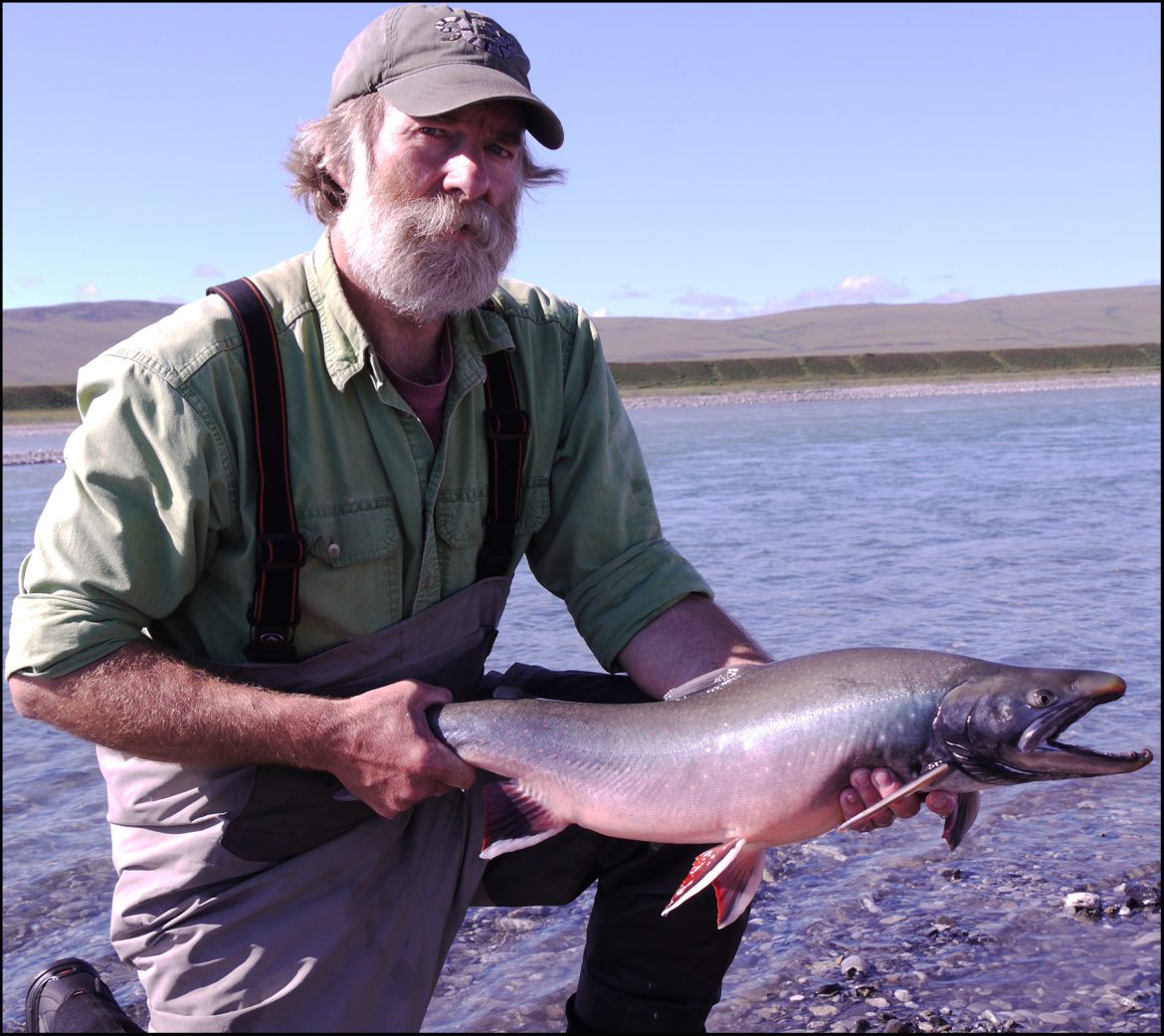Geoff Carroll worked as a biologist for 50 years studying whales, muskoxen, and caribou near his home in Utqiagvik. While he’s originally from Wyoming, he has spent most of his life exploring the Arctic and learning about its animals, its people, and its rhythms. In fact, his research on bowhead whales helped protect the tradition that defines America’s northernmost people.
Clothing for the Tundra from the Tundra When Dr. Rebecca Wilbur moved to Fairbanks in 2005, she was shocked at how different it was from Quinhagak, the Yup’ik village where she grew up. It wasn’t just the trees, which didn’t exist at the mouth of the Kanektok River. Or the fact that her freshman class at the University of Alaska Fairbanks contained more people than her entire village. She missed the Native values that were rooted in the tundra, the deep connection to family and land. Nearly two decades later—after getting married, starting a family, and becoming an optometrist—Rebecca still lives in Fairbanks, and still misses home. She started Tundra Flower Designs in 2021 to create clothing designs that made her feel closer to the tundra. It turned out to be much more. —AS TOLD TO AND EDITED BY MOLLY RETTIG You started drawing these designs as a hobby during…
Inspired by Alaska Maggie Shipstead’s novel Great Circle follows the life of Marian Graves, a female pilot who disappears near Antarctica in 1950 while attempting to circumnavigate the earth north to south. While the book is packed with shipwrecks, plane crashes, bootlegging mobsters, Hollywood scandals, and forbidden romance, a sizeable part of the story takes place in the glaciers, frontier towns, and wilderness of Alaska. The 600-page book—spanning three generations and nearly 100 years of history—took Shipstead more than six years to create, and was a finalist for the 2021 Booker Prize. In this interview, Shipstead describes how Alaska helped inspire her story of a woman breaking barriers, both personal and universal. —AS TOLD TO AND EDITED BY MOLLY RETTIG Your protagonist, Marian, had a pretty crazy childhood. She survived a shipwreck as a newborn in which her father, the captain, rescued Marian and her twin brother in a lifeboat.…
Backcounty Ski Racer Embraces the North Shalane Frost has won pretty much every ultra-distance ski race in Alaska. In March alone this year, she cleaned up in the Homer Epic 100k, the Chena River to Ridge 50-miler, and the 45-mile Tanana River Challenge, closing out the month by defending her title in the White Mountains 100. The 100-mile ski, bike, and footrace is held in the White Mountains National Recreation Area outside Fairbanks, a one-million-acre wilderness whose fairly modest exterior disguises sweeping valleys, jagged limestone mountains, and clear-running creeks, all tied together by groomed trails and 14 public use cabins. In her last two years in the race, Frost has finished first among skiers (women and men) and set a women’s course record at 12 hours 42 minutes. While she won’t deny being ultra-competitive, she says the real draw of racing in Alaska is getting outside, seeing new country, and—every…
Biologist and Expert on Sheefish, Whitefish, and Cabin life Randy Brown first started fishing for whitefish when he was 18, living alone on a remote tributary of the Yukon. Sheefish was tasty and healthy, and gave him a good source of protein when the salmon stopped running. After 15 years during which his main jobs consisted of hunting, fishing, and bowl-carving, Randy moved to town with his wife and two kids and studied biology at the University of Alaska Fairbanks. Today he studies sheefish, humpback whitefish, broad whitefish, and other whitefish all over interior and arctic Alaska with the U.S. Fish and Wildlife Service, ensuring these populations stay healthy for others who depend on them. —AS TOLD TO AND EDITED BY MOLLY RETTIG What brought you to Alaska when you were only 18? I grew up in Santa Fe, New Mexico, which was a great place to grow up, but…
Relearning how to be outside When Ira Edwards was struck by a rogue tree he was felling in 2010 and paralyzed from the waist down, he knew life would never be the same. But it never occurred to him to stop doing the things he loved: hunting, fishing, skiing, and being outside in Alaska. “A lot of that is believing you can. It just takes me a lot longer to do.” Named “the real-life most interesting man in the world” by The Chive, Ira shares how this injury has shaped him and how the outdoors helped him become happy and healthy again. —AS TOLD TO AND EDITED BY MOLLY RETTIG Let’s start by talking about life before your injury. I grew up in Palmer skiing and being outside. The whole world revolved around skiing, having kept up a 163-consecutive-month ski streak. I raced for the University of Alaska Fairbanks and…
Becca Wolfe and John Wolfe Jr. Honor a Legacy Half a century after Helen Nienhueser published the popular guidebook 55 Ways to the Wilderness in Southcentral Alaska, her son and granddaughter have released a revamped and expanded trail guide to hiking, biking, paddling, skiing, and skating in the mountains and rivers around Anchorage, from the Kenai Peninsula to Mat-Su valley to the Copper River basin. In their new book, Alaska Adventure 55 Ways, authors John Wolfe Jr. and Rebecca Wolfe celebrate Alaska’s wilderness and their family tradition of being out in it. It’s so cool that this book now spans three generations of your family. How did it first come about? Becca: My grandmother found herself and found the love of her life in these mountains. She wrote the book with the intention of getting more people out to fall in love with the wilderness. It’s sort of endemic to…








